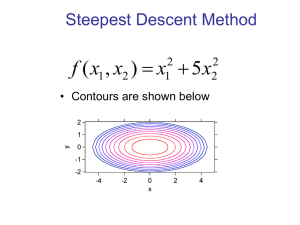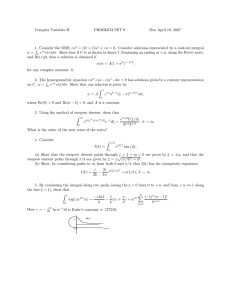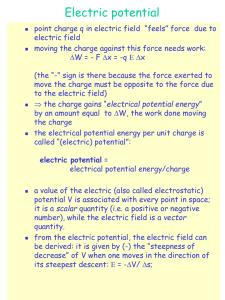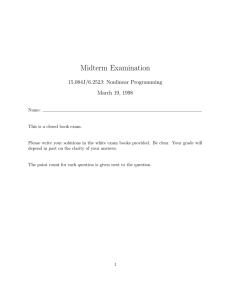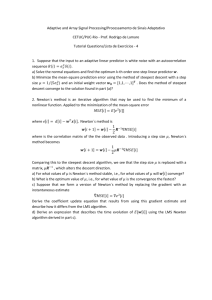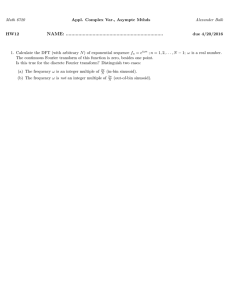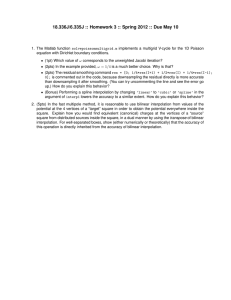Midterm 1
advertisement
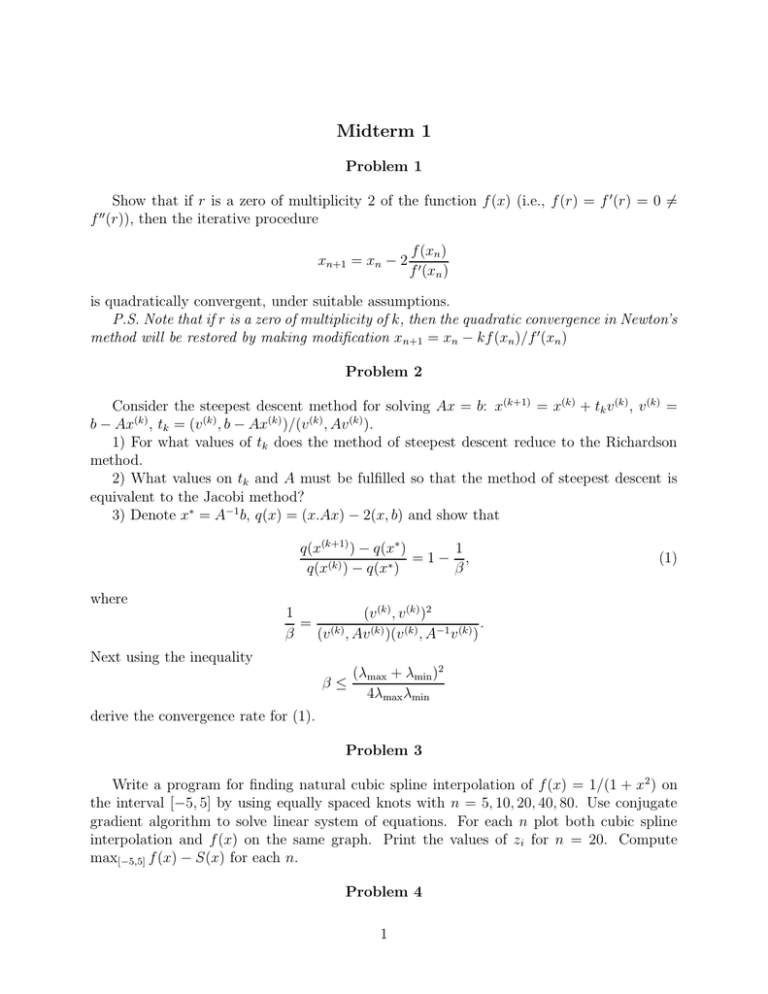
Midterm 1 Problem 1 Show that if r is a zero of multiplicity 2 of the function f (x) (i.e., f (r) = f 0 (r) = 0 6= f 00 (r)), then the iterative procedure xn+1 = xn − 2 f (xn ) f 0 (xn ) is quadratically convergent, under suitable assumptions. P.S. Note that if r is a zero of multiplicity of k, then the quadratic convergence in Newton’s method will be restored by making modification xn+1 = xn − kf (xn )/f 0 (xn ) Problem 2 Consider the steepest descent method for solving Ax = b: x(k+1) = x(k) + tk v (k) , v (k) = b − Ax(k) , tk = (v (k) , b − Ax(k) )/(v (k) , Av (k) ). 1) For what values of tk does the method of steepest descent reduce to the Richardson method. 2) What values on tk and A must be fulfilled so that the method of steepest descent is equivalent to the Jacobi method? 3) Denote x∗ = A−1 b, q(x) = (x.Ax) − 2(x, b) and show that q(x(k+1) ) − q(x∗ ) 1 =1− , (k) ∗ q(x ) − q(x ) β where (1) 1 (v (k) , v (k) )2 = (k) . β (v , Av (k) )(v (k) , A−1 v (k) ) Next using the inequality (λmax + λmin )2 β≤ 4λmax λmin derive the convergence rate for (1). Problem 3 Write a program for finding natural cubic spline interpolation of f (x) = 1/(1 + x2 ) on the interval [−5, 5] by using equally spaced knots with n = 5, 10, 20, 40, 80. Use conjugate gradient algorithm to solve linear system of equations. For each n plot both cubic spline interpolation and f (x) on the same graph. Print the values of zi for n = 20. Compute max[−5,5] f (x) − S(x) for each n. Problem 4 1 Characterize the family of n×n nonsingular matrices A for which one step of Gauss-Seidel algorithm solves Ax = b, starting at the vector x = 0. Problem 5 What condition will have to be placed on the nodes x0 and x1 if the interpolation problem p(xi ) = ci0 , p00 (xi ) = ci2 , (i = 0, 1) is to be solvable by a cubic polynomial (for arbitrary cij )? 2

